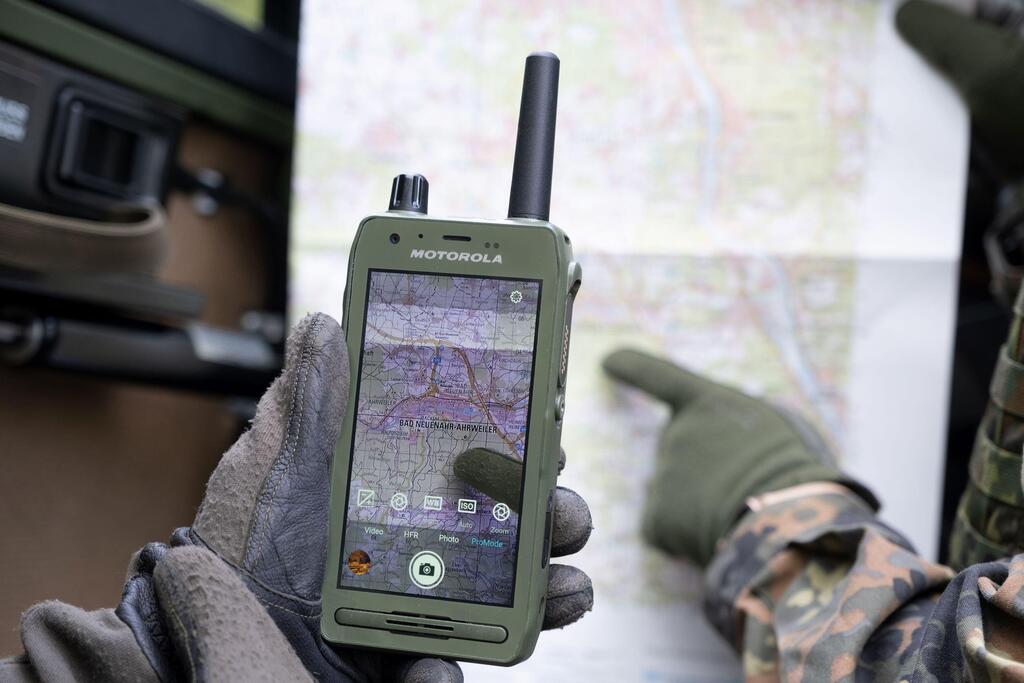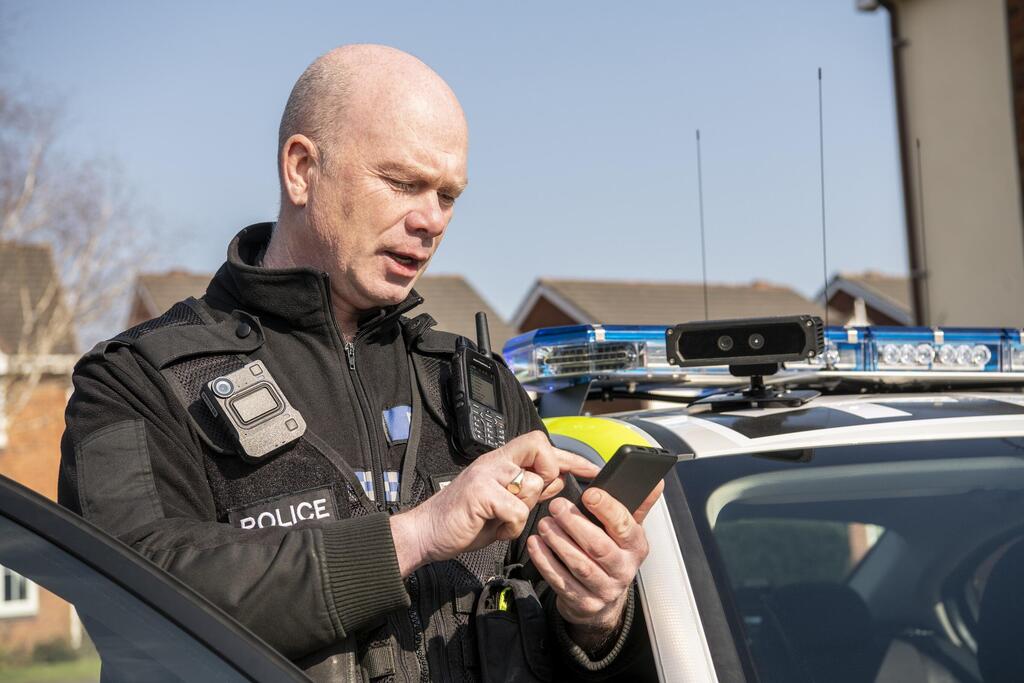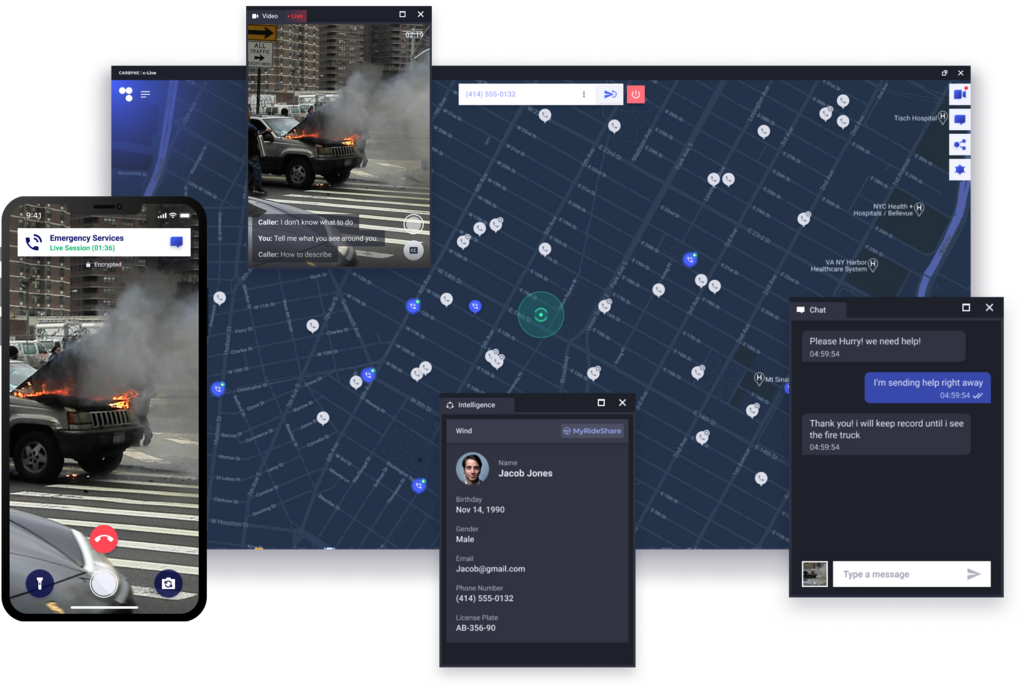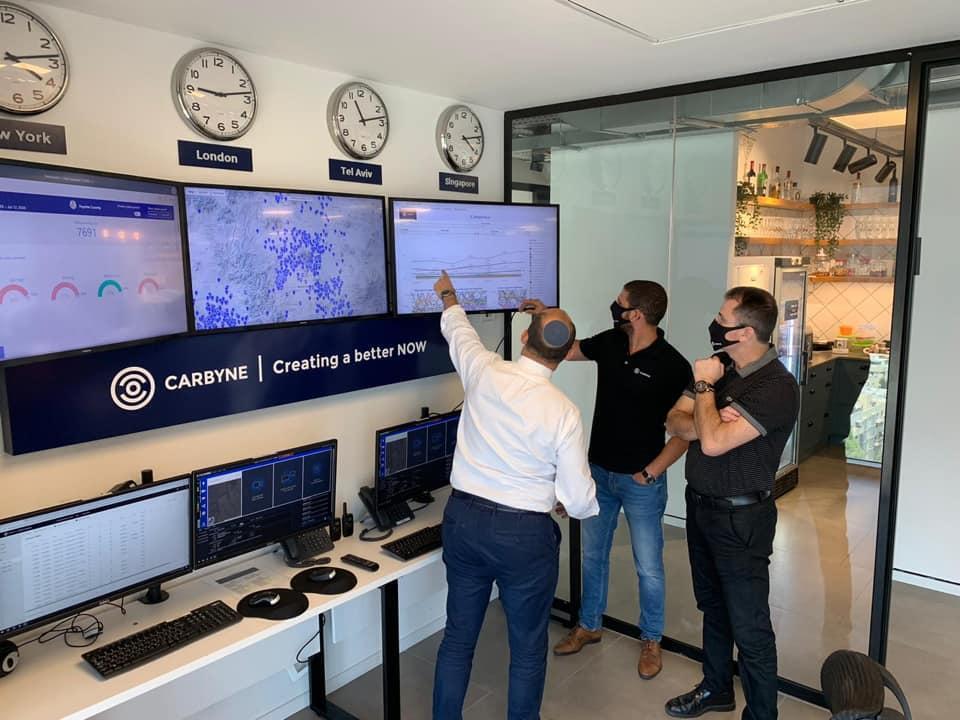Emergency centers throughout Israel require an interface that is capable of presenting and consolidating real-time crucial information on medical incidents, terror attacks, criminal events, natural disasters or other incidents before the operator. That technology is provided by Crabyne, a New York-based company employing approximately 160 people, with 60 of them working at their development center in Tel Aviv.
Read more:
In Israel today, each emergency and rescue organization, from Magen David Adom to Fire and Rescue Services, maintains its separate emergency center. According to the chief operations officer for the Zaka International Rescue Unit, Dubi Meisel, the system provided by Carbyne is the ultimate choice, akin to today's "Nokia N95," and it was adopted by the organization three years ago.
Currently, when someone calls the United Hatzalah center (at number 1221), they receive an SMS with a link on their mobile device. Upon clicking the link, a live video transmission automatically opens, while simultaneously, the center receives a stream of vital information: the caller's precise location, their movement tracking, and more.
The caller can also send images from the scene or communicate with the operator via chat if they are unable to speak. All information is processed automatically and displayed on a single screen. In professional terms, this technology is called NG911, enabling communication even in cases of cellular network disruptions.
At United Hatzalah, they know how to make the best use of this information. The organization is based on 6,500 volunteer paramedics spread across the country, each equipped with a unique, updated smartphone displaying their real-time location on the screen. Every call is directly routed to the nearest available volunteer.
Additionally, Carbyne has developed a robot that automatically records emergency calls and broadcasts location-based alerts to volunteers in the vicinity, even when the operator is occupied. All data is continually recorded and can be analyzed after the fact.
According to Noam Frankel, Deputy Vice President for Research and Development at Carbyne, the company currently operates similar systems in 120 countries worldwide.
In the United States, for example, rising crime rates coupled with natural disasters led the government to allocate 10$ billion last year to revamping 911 emergency center infrastructures. Miami and New Orleans are among the pioneers in this field.
A new feature added to the system is translation: if the caller speaks a foreign language, the system immediately identifies it and automatically translates their words to the operator (currently available in English and Spanish only).
Carbyne can connect to any telephone system, but in wide disaster areas, such as earthquakes, floods or war zones, it collaborates with the aviation industry to establish a private alternative cellular network based on the cloud. This enables emergency personnel and civilians to remain connected even when commercial networks are down.
For example, when the conflict broke out in Ukraine, Carbyne, which holds one of its development centers there, quickly deployed such a system throughout the country within a week.
The surveillance camera comes to life
During a disaster - the collapse of communication networks, cellular, and landlines - becomes a pressing issue that demands an immediate solution. A reliable and stable communication network is crucial for accurate information flow and, most importantly, coordinating rescue operations among various personnel in the field.
Motorola, a veteran company now known as Motorola Solutions, is the immediate address for this problem. The legendary queen of communication devices, alive and kicking, maintains a large development center in Israel (with approximately 1,000 employees) and continuously adapts to the rapidly evolving trends in the industry.
Today, Motorola Solutions also provides video solutions, image analysis, smart body and vehicle cameras, as well as operating control centers and 911 centers.
However, communication devices have always been closely associated with the company more than anything else, and it enjoys increasing sales, particularly among the new generation.
So, what does a communication device look like in 2023? Externally, it closely resembles the devices we knew years ago: a rugged and durable casing with large, physical buttons that give a satisfying "click" when pressed, allowing for glove operation in rugged conditions. For the new generation, an additional dedicated SMS button is added, and it incorporates background noise filtering technology, even silencing alarms and sirens.
Externally similar, but completely different internally. As the entire communication is now digital, the device can also send and receive text messages, perform identification, and use highly encrypted communication. In many countries, it is already integrated with the body cameras attached to each police officer or firefighter and even synchronizes with nearby street cameras.
During a security event, the process is automatic: when the officer, for example, draws his weapon, the communication device detects the action, sends an emergency call to the center, and activates the body camera to start recording and transmitting in real-time. In specific locations, even the nearby street camera receives an automatic call and activates itself. The security personnel are thus able to focus solely on the event at hand.
Motorola, by the way, has developed a new body camera for police officers, developed in Israel. It has invested heavily in data security and encryption to ensure that the documented footage is received as reliable court evidence.
Among other features, its lenses are limited to displaying the officer's field of view accurately, reflecting precisely what they experience. Additionally, it lacks a night camera as officers cannot see in the dark.
Better Together
According to Rafi Katav, Vice President of Business Development at Motorola Solutions, the company now focuses on creating a complete environment of systems that can "communicate with each other."
Katav, an international expert in communication and emergency services, previously won a contract to establish the communication systems for the IDF Home Front Command and Israeli Police.
How will devices that survive harsh conditions help if the network itself fails? In the Meron disaster, for example, cellular networks completely collapsed.
"Yes, but the networks used by security forces are entirely different. In the world of communication, two technologies stand side by side, both of which have become international standards. The American standard is called P25, and the European one is known as 'Tetra.' Both include hundreds of specific features.
In Israel, for instance, the Israeli Police and the Home Front Command use P25, while the Sea Ports Authority, Airports Authority, and the Tel Aviv Light Rail use 'Tetra.' These communication networks, although they function similarly to cellular networks in principle, have more robust, stable, and sophisticated centers ('main switches') and 'sites' (antennas). Unlike cellular networks, they are also disconnected from the external world."
In security networks, switches and sites are spread across different geographic areas. Each significant element is duplicated. Even if one site becomes completely disconnected from the national system, it continues to function independently and provide coverage for its area.
Even if the entire system collapses, the communication device itself can operate through "direct mode" with other devices in its vicinity, up to a range of 5 km, enabling the commander at the scene to communicate with their team in any case. Power is supplied by a large "battery bank," sufficient for up to 24 hours without electricity.
On the other hand, cellular-based networks have advantages in transmitting video and data, which are crucial even in emergencies. Cellular sites can be rapidly established, deployed, and expanded in the field, creating ad-hoc coverage areas for operations.
According to Avraham Ben-David (Benda), CEO of Motorola Solutions Israel, the new global trend in security communication is integration (Better Together) - devices that bridge both worlds: the cellular (LTE and 5G) used mainly for data transfer, and P25 or "Tetra." The integrated standard is currently developing.
Motorola Solutions has already developed such a device for the German military, entirely designed in Israel, resembling a bulky Android smartphone with physical buttons.
Ben-David says, "Public security organizations, infrastructure companies, and private companies are at a crossroads, deciding which communication system to rely on in the future between these two technologies. In practice, they don't need to make such a decision; they can already benefit from both worlds."
Carbyne founder Amir Elichai believes that in terms of emergency calls, advanced computing and artificial intelligence are expected to replace traditional call centers. "We are also seeing more and more IoT sensors transmitting emergency information. Prediction and data sharing among various authorities will become a standard. We are focusing on developing AI capabilities and integration to rapidly identify emergencies and provide faster responses than what we've seen until today."






